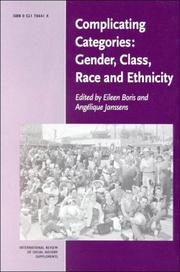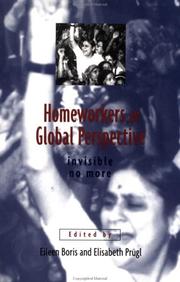| Listing 1 - 10 of 32 | << page >> |
Sort by
|
Book
ISBN: 087722563X 087722384X Year: 1986 Publisher: Philadelphia, Pa Temple University Press
Abstract | Keywords | Export | Availability | Bookmark
 Loading...
Loading...Choose an application
- Reference Manager
- EndNote
- RefWorks (Direct export to RefWorks)
Arts and Crafts [movement] --- Art styles --- labor --- History of civilization --- influence --- Morris, William --- Ruskin, John --- 72.035 <73> --- Arts and crafts movement --- -Aesthetic movement (Art) --- Oude bouwstijlen in de 19e eeuw. Post-renaissance in de architectuur--Verenigde Staten van Amerika. VSA. USA --- -Ruskin, John --- -Influence --- Influence --- -Oude bouwstijlen in de 19e eeuw. Post-renaissance in de architectuur--Verenigde Staten van Amerika. VSA. USA --- 72.035 <73> Oude bouwstijlen in de 19e eeuw. Post-renaissance in de architectuur--Verenigde Staten van Amerika. VSA. USA --- -72.035 <73> Oude bouwstijlen in de 19e eeuw. Post-renaissance in de architectuur--Verenigde Staten van Amerika. VSA. USA --- Morris, William, --- Ruskin, John, --- Morisu, Wiriamu, --- Morris, Uilʹi︠a︡m, --- Morris, William M., --- Moris, V., --- Морис, В., --- Influence. --- Rëskin, Dzhon, --- Ruskin, --- Ruskin, J. --- Rŏsŭkʻin, --- Modern painters, Author of, --- Author of Modern painters, --- Graduate of Oxford, --- Rasukin, Jon, --- ラスキンジョン,

ISBN: 0521443709 0521455480 Year: 1994 Publisher: Cambridge [England],New York, N.Y. : Cambridge University Press,
Abstract | Keywords | Export | Availability | Bookmark
 Loading...
Loading...Choose an application
- Reference Manager
- EndNote
- RefWorks (Direct export to RefWorks)
Home labor --- Working mothers --- Travail à domicile --- Mères au travail --- History --- Histoire --- History.
Book
ISBN: 9780190874629 0190874627 019094370X 0190874635 0190874643 Year: 2019 Publisher: New York, NY : Oxford University Press,
Abstract | Keywords | Export | Availability | Bookmark
 Loading...
Loading...Choose an application
- Reference Manager
- EndNote
- RefWorks (Direct export to RefWorks)
Founded in 1919 along with the League of Nations, the International Labour Organization (ILO) establishes labor standards and produces knowledge about the world of work, serving as a forum for nations, unions, and employer associations. Before WWII, it focused on enhancing conditions for male industrial workers in Western, often imperial, economies, while restricting the circumstances of women's labors. Over time, the ILO embraced non-discrimination and equal treatment. It now promotes fair globalization, standardized employment and decent work for women in the developing world. In Making the Woman Worker, Eileen Boris illuminates the ILO's transformation in the context of the long fight for social justice. Boris analyzes three ways in which the ILO has classified the division of labor: between women and men from 1919 to 1958; between women in the global south and the west from 1955 to 1996; and between the earning and care needs of all workers from 1990s to today. Before 1945, the ILO focused on distinguishing feminized labor from male workers, whom the organization prioritized. But when the world needed more women workers, the ILO (a UN agency after WWII) highlighted the global differences in women's work, began to combat sexism in the workplace, and declared care work essential to women's labor participation. Today, the ILO enters its second century with a mission to protect the interests of all workers in the face of increasingly globalized supply chains, the digitization of homework, and cross-border labor trafficking. As Boris shows, the ILO's treatment of women is a window into the modern history of labor. The historic relegation of feminized labor to the part-time, short-term, and low-waged prefigures the future organization of work. The labor force is increasingly self-employed and working as long as possible--a steep price for flexibility--with minimal governmental oversight. How we treat workers in the next century will inevitably build upon evolving ideas of the woman worker, shaped significantly through the ILO.
Women --- Women in the labor movement. --- Sex discrimination in employment --- Women's rights. --- Employment --- History --- Law and legislation. --- International Labour Organization --- History. --- Women in the labor movement --- Women's rights --- Employment&delete& --- Law and legislation --- ILO (International Labour Organization) --- Organisation internationale du travail --- OIT (International Labour Organization) --- Organización Internacional del Trabajo --- Olon Ulsyn Khȯdȯlmȯriĭn Tovchoo --- Olon Ulsyn Khȯdȯlmȯriĭn Baĭguullaga --- OUKhB --- Shirika la Kazi Duniani --- Samnakngān Rǣngngān rawāng Prathēt --- International Labor Organization --- United Nations. --- ʻOngkān Rǣngngān rawāng Prathēt --- International Labour Office --- International Labour Organisation --- Rights of women --- Human rights --- Employment (Economic theory) --- Sex role in the work environment --- Sexual division of labor --- Labor movement --- Human females --- Wimmin --- Woman --- Womon --- Womyn --- Females --- Human beings --- Femininity --- Civil rights --- Legal status, laws, etc. --- Femmes --- Femmes dans le mouvement ouvrier --- Discrimination sexuelle dans l'emploi --- Travail --- Droit --- Histoire. --- Droit. --- Women employees --- Labor laws and legislation --- 1900-2099
Book
Year: 1986 Publisher: Madison, Wis. Institute for Legal Studies
Abstract | Keywords | Export | Availability | Bookmark
 Loading...
Loading...Choose an application
- Reference Manager
- EndNote
- RefWorks (Direct export to RefWorks)
History of the law --- Vermont --- Vermont [state]
Book
ISBN: 9780190874643 Year: 2019 Publisher: Oxford Oxford University Press, Incorporated
Abstract | Keywords | Export | Availability | Bookmark
 Loading...
Loading...Choose an application
- Reference Manager
- EndNote
- RefWorks (Direct export to RefWorks)
This book explains how the 20th century labor standard regime, forged by the International Labor Organization, cast the woman worker as a special type of worker, but a century later, previously excluded home-based workers placed caring labor at the center of debates over the future of work amid new precarity.
Book
ISBN: 0252053745 9780252053740 9780252044700 9780252086793 Year: 2023 Publisher: Urbana, Illinois : University of Illinois Press,
Abstract | Keywords | Export | Availability | Bookmark
 Loading...
Loading...Choose an application
- Reference Manager
- EndNote
- RefWorks (Direct export to RefWorks)
"Around the world, hundreds of millions of labor migrants endure exploitation, lack of basic rights, and institutionalized discrimination and marginalization. What factors created a system that forces this huge and growing mass of human beings to toil as an institutional and judicial lower caste? In what ways did labor migrants shape their living and working conditions in the past, and what opportunities exist for them today? Global Labor Migration presents new multidisciplinary, transregional perspectives on issues surrounding global labor migration. The essays go beyond disciplinary boundaries, with sociologists, ethnographers, legal scholars, and historians contributing research that extends comparison among and within world regions. Looking at migrant workers from the late nineteenth century to the present day, the contributors illustrate the need for broader perspectives that study labor migration over longer timeframes and from wider geographic areas. The result is a unique, much-needed collection that delves into one of the world's most pressing issues, generates scholarly dialogue, and proposes cutting-edge research agendas and methods"--
Foreign workers. --- Labor mobility. --- Labor market. --- Emigration and immigration --- Economic aspects.

ISBN: 052178641X 9780521786416 9780511563867 0511563868 Year: 1999 Volume: 7 Publisher: Cambridge: Cambridge university press,
Abstract | Keywords | Export | Availability | Bookmark
 Loading...
Loading...Choose an application
- Reference Manager
- EndNote
- RefWorks (Direct export to RefWorks)
This volume focuses on complicating central concepts in the understanding of economic and social history: class, gender, race and ethnicity. Only recently have historians begun to ask how gender, race, and ethnicity as categories of analysis change narratives of class formation and working-class experience. While all three concepts refer to systems of inequality, it remains unclear how these systems of difference relate to each other. Despite a growing body of empirical literature, authors more often connect dyads rather than consider historical phenomenan from the tryad of class, race and gender. This volume highlights attempts to write a richer history that complicates categories, suggesting how class, gender, race and/or ethnicity combine across a wide range of economic and social landscapes.
World history --- anno 1800-1999 --- Working class --- Women --- Minorities --- Social classes --- History --- Employment --- -Social classes --- -Women --- -Working class --- -Commons (Social order) --- Labor and laboring classes --- Laboring class --- Labouring class --- Working classes --- Labor --- Human females --- Wimmin --- Woman --- Womon --- Womyn --- Females --- Human beings --- Femininity --- Class distinction --- Classes, Social --- Rank --- Caste --- Estates (Social orders) --- Social status --- Class consciousness --- Classism --- Social stratification --- Ethnic minorities --- Foreign population --- Minority groups --- Persons --- Assimilation (Sociology) --- Discrimination --- Ethnic relations --- Majorities --- Plebiscite --- Race relations --- Segregation --- -History --- History. --- -Employment --- Employment&delete& --- Arts and Humanities --- Working class - History --- Women - Employment - History --- Minorities - Employment - History --- Social classes - History

ISBN: 0415910072 9780415910071 Year: 1996 Publisher: London: Routledge,
Abstract | Keywords | Export | Availability | Bookmark
 Loading...
Loading...Choose an application
- Reference Manager
- EndNote
- RefWorks (Direct export to RefWorks)

ISBN: 0253212758 Year: 1999 Publisher: Bloomington Indiana
Abstract | Keywords | Export | Availability | Bookmark
 Loading...
Loading...Choose an application
- Reference Manager
- EndNote
- RefWorks (Direct export to RefWorks)
vrouwengeschiedenis --- feminisme --- Verenigde Staten van Amerika --- History --- Personnel management --- Sociology of the family. Sociology of sexuality --- Higher education --- United States --- United States of America --- Feminism --- Historiography --- Career --- Book --- Experiences --- Verenigde Staten van Amerika.
Book
ISBN: 0199378584 0199939055 019971634X 128373964X 0195329112 0199949492 Year: 2012 Publisher: Oxford : Oxford University Press,
Abstract | Keywords | Export | Availability | Bookmark
 Loading...
Loading...Choose an application
- Reference Manager
- EndNote
- RefWorks (Direct export to RefWorks)
In this sweeping narrative history from the Great Depression of the 1930s to the Great Recession of today, Caring for America rethinks both the history of the American welfare state from the perspective of care work and chronicles how home care workers eventually became one of the most vibrant forces in the American labor movement. Eileen Boris and Jennifer Klein demonstrate the ways in which law and social policy made home care a low-waged job that was stigmatized as welfare and relegated to the bottom of the medical hierarchy. For decades, these front-line caregivers labored in the shadows o
Home health aides --- Labor unions --- Community health aides --- Home care services
| Listing 1 - 10 of 32 | << page >> |
Sort by
|

 Search
Search Feedback
Feedback About UniCat
About UniCat  Help
Help News
News